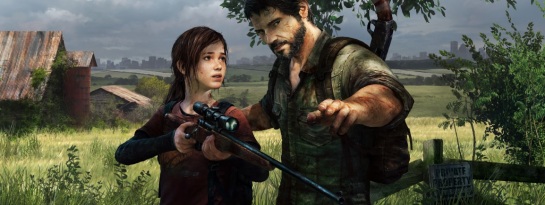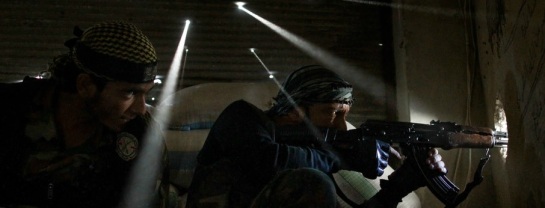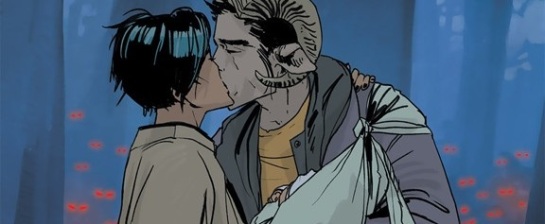“The world’s been hard on us. Hard on him. Joel’s done some terrible things. He tells me that on this journey, you hang onto your morals and die, or you do whatever it takes to survive… I guess I’ll find out.”
The Last of Us, recently released for the Playstation 3, is without question one of the most rewarding videogame experiences of my life. Emotionally tolling and morally challenging, it leaves you exhausted and unsettled, but also exhilarated and satisfied.
In The Last of Us, the world has been ravaged by a global fungal outbreak – based on the horrifyingly real “cordyceps” strain – that has infected the majority of humans and transformed them into deadly and disturbing creatures. Twenty years after the fungus eliminated most of the population, those who managed to survive eke out a living in militarized quarantine zones or try to make their way in the nature-reclaimed ruins of formerly great cities. One group – The Fireflies – offers fleeting hope by supposedly searching for a cure and attempting to rebuild civilization.
Caught in the middle is the principal protagonist, Joel: a hardened survivor and smuggler who, after suffering great loss, seems to have sacrificed any moral pretense in service of a “kill or be killed” philosophy. Anger simmers beneath his every utterance and the game makes it abundantly clear he is capable of extreme acts of violence. Joel is not a hero. And although he is haunted by regret and outrage, at his core he is a good man trying – and failing – to make the best of a bad situation.
Accompanying Joel throughout much of the game is the secondary protagonist, Ellie: an orphaned young girl of great importance for the Fireflies. Ellie was born and raised in a quarantine zone after the fall of civilization and has been toughened by her fair share of suffering. Despite this, she has not lost her youthful sense of adventure or morality and although she is often frightened by the world into which she is thrust, Ellie’s honest resolve drives her to survive.
Through a tragic set of circumstances, Joel and Ellie are unwillingly forced into a tense, sometimes adversarial, partnership that takes them on a year-long journey across the destroyed-yet-beautiful former United States. And like similar creative works (Cormac McCarthy’s The Road principal among them), the two are primarily concerned with living to see the next day, but it’s the relationship that develops between Joel and Ellie that is the focus of the narrative. Though the beating heart of the game is comprised of violent encounters and frantic scrambles for sanctuary, its soul is comprised of the quiet, emotional moments. A glance at a broken watch or a simple high-five carries tremendous emotional weight, unlike anything in any game I’ve played before.
Between the writing, art direction, graphics, motion capture performances, music, and voice acting, The Last of Us not only rivals, but surpasses the quality of some of my favorite films. Joel and Ellie are down-to-earth and realistic, and before long I found myself thinking of them as friends. The interactivity of the experience makes it easy to identify with Joel and Ellie’s plight, and although the world they inhabit is an irrevocably transformed version of our own, it and their reactions to it resonate deeply. Their odyssey is wild and strange, but the humanity and pathos the creators manage to convey to the player through Joel and Ellie is astounding.
The game’s thematic impetus is a multifaceted examination of the moral nature of survival. Hard choices and harder sacrifices are made by the characters, and the intrinsic morality of those choices and sacrifices becomes the central challenge of Joel and Ellie’s relationship. The game, by presenting the brutal, unvarnished consequences of Joel’s actions, asks two simple questions of the player: “What would you do to survive?” and “Do you deserve to survive?”
My answers took me down some intense paths of self-examination, and it’s these difficult philosophical conundrums that have led some reviewers to wonder if The Last of Us can be considered a “fun” game. There are unnerving acts of violence the game asks you to engage with. There are serious challenges to the validity of human endurance. And while I admit it is definitely not for everyone and is at times depressing, there are moments of overwhelming beauty and triumphant reward that cement the tough journey with Joel and Ellie as one of the most memorable and enduring in gaming history.





